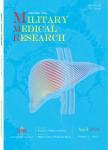Recent advances in CRISPR-based genome editing technology and its applications in cardiovascular research
作者机构:State Key Laboratory of ProteomicsBeijing Proteome Research CenterNational Center for Protein SciencesBeijing Institute of LifeomicsBeijing 100071China Yaneng BIOScience(Shenzhen)Co.Ltd.Shenzhen 518102GuangdongChina
出 版 物:《Military Medical Research》 (军事医学研究(英文版))
年 卷 期:2023年第10卷第6期
页 面:862-880页
核心收录:
学科分类:0710[理学-生物学] 1002[医学-临床医学] 07[理学] 08[工学] 09[农学] 100201[医学-内科学(含:心血管病、血液病、呼吸系病、消化系病、内分泌与代谢病、肾病、风湿病、传染病)] 071007[理学-遗传学] 0901[农学-作物学] 0836[工学-生物工程] 090102[农学-作物遗传育种] 10[医学]
基 金:supported by the National Natural Science Foundation of China (82270355, 82270354, 81970134, 82030011, 31630093) the National Key Research and Development Program of China (2019YFA0801601, 2021YFA1101801)
主 题:Genome editing CRISPR-Cas system Base editing Prime editing Transposon-associated genome editing Cardiovascular disease Heart Blood vessel Gene therapy
摘 要:The rapid development of genome editing technology has brought major breakthroughs in the fields of life science and medicine. In recent years, the clustered regularly interspaced short palindromic repeats(CRISPR)-based genome editing toolbox has been greatly expanded, not only with emerging CRISPR-associated protein(Cas) nucleases, but also novel applications through combination with diverse effectors. Recently, transposon-associated programmable RNA-guided genome editing systems have been uncovered, adding myriads of potential new tools to the genome editing toolbox. CRISPR-based genome editing technology has also revolutionized cardiovascular research. Here we first summarize the advances involving newly identified Cas orthologs, engineered variants and novel genome editing systems, and then discuss the applications of the CRISPR-Cas systems in precise genome editing, such as base editing and prime editing. We also highlight recent progress in cardiovascular research using CRISPR-based genome editing technologies, including the generation of genetically modified in vitro and animal models of cardiovascular diseases(CVD) as well as the applications in treating different types of CVD. Finally, the current limitations and future prospects of genome editing technologies are discussed.



